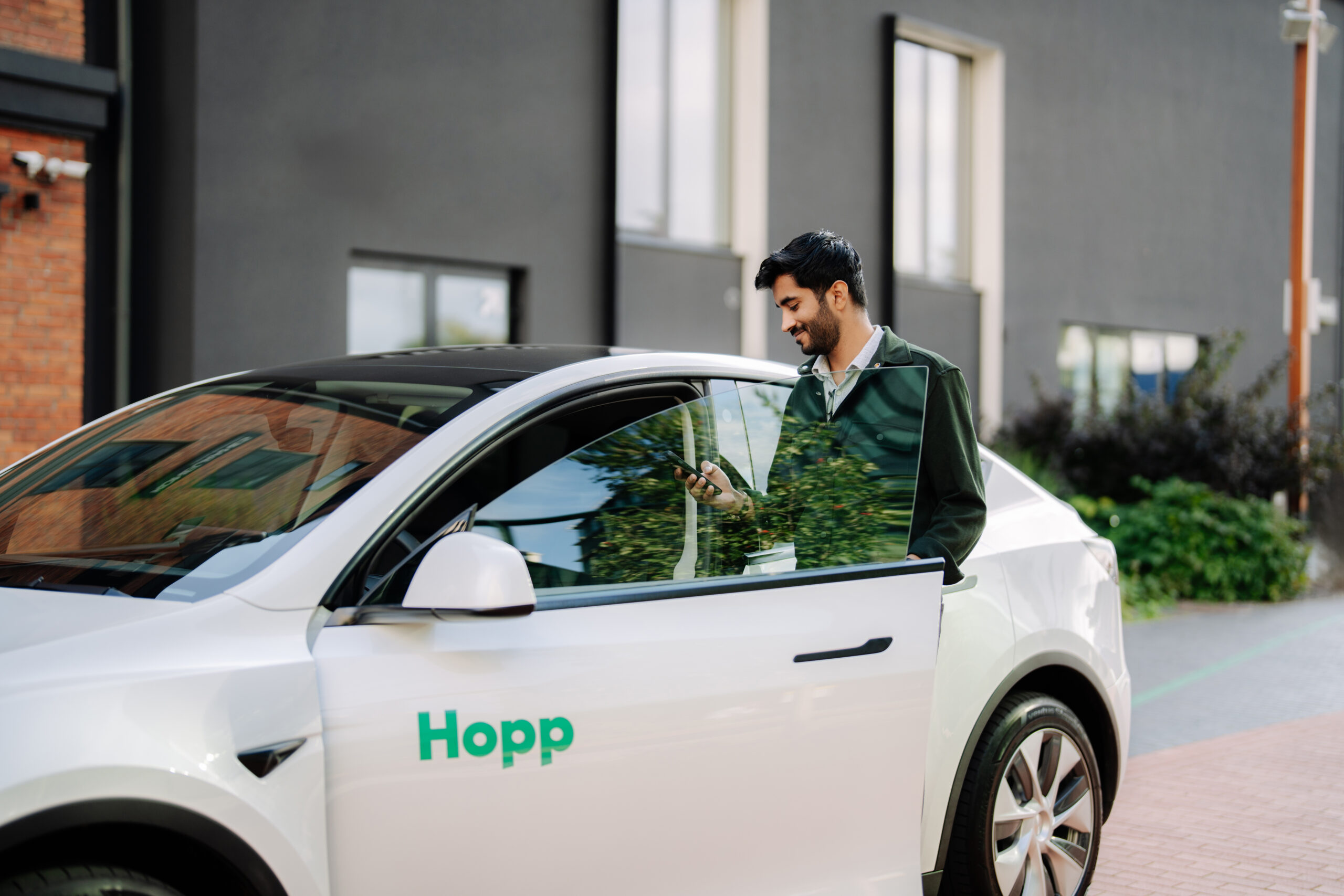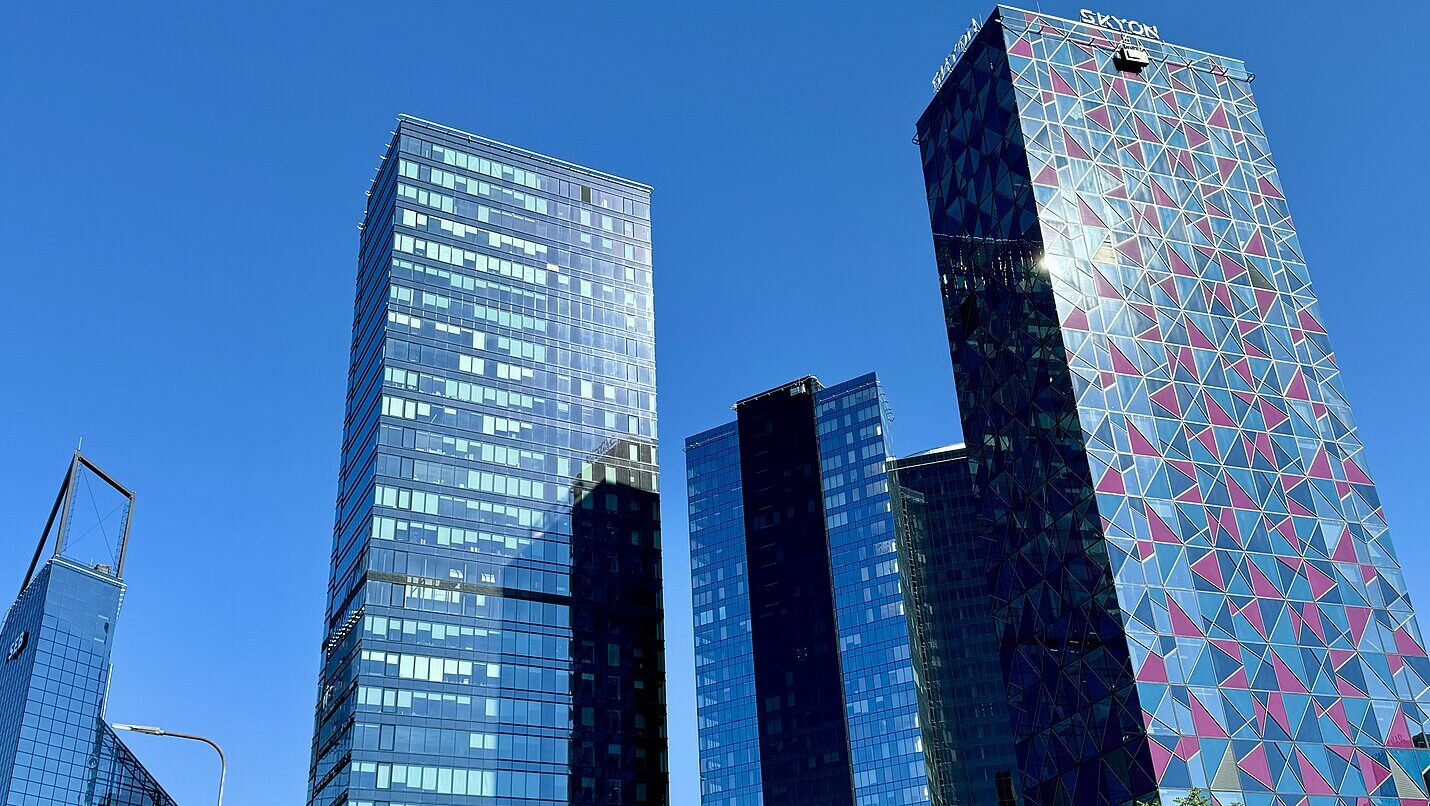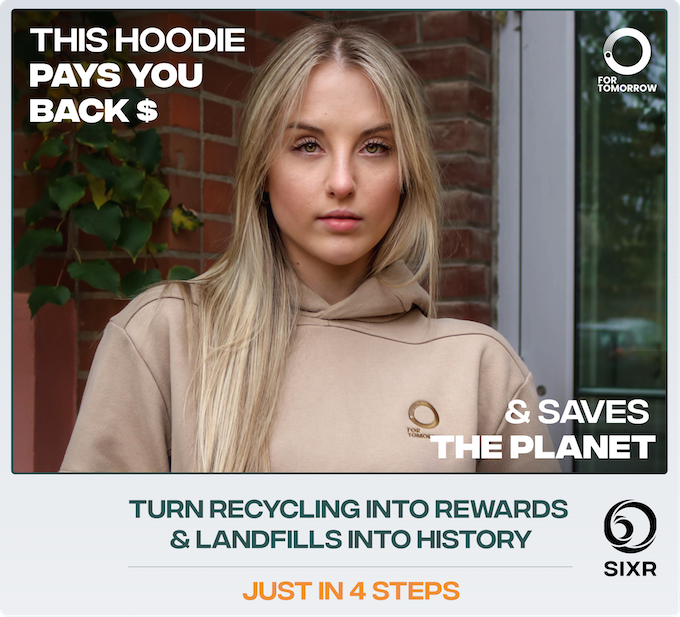
And these designers are here in our communities. On January 23rd, Kai Palo, a fashion designer based in Toronto, Canada, was announced as the designer of For Tomorrow, a clothing brand created for George Brown College and its organization the Brookfield Sustainability Institute.
With the brand moving at full steam ahead, Palo shared the vision of her designs and her aims as an entrepreneur:
Vincent Teetsov: Can you tell us more about the inspiration behind your For Tomorrow brand designs and the concept of zero-waste design?
Kai Palo: The concept of the For Tomorrow brand was shaped by six guiding principles for circular apparel design. These six principles are: physical and emotional durability, sustainable fibres, minimizing waste, designing for disassembly, equitable labour, and just-in-time production.
Creating garments for the everyday consumer that can withstand harsh weather, as seen in Canada, and support active and commuter lifestyles were considerations in the design and production process.
Zero waste design is an approach to design that aims to minimize or completely eliminate the generation of waste during the production and use of a product. The key goal is to reduce the environmental impact by rethinking the entire lifecycle of a product and finding innovative ways to design, produce, and consume goods without generating waste.
While achieving absolute zero-waste is a formidable challenge for the industry as a whole, the For Tomorrow brand garments have been designed with a 90%+ efficiency, setting a higher standard for other brands to follow.
(Kai Palo)
In the world of fashion, designers aim to use materials in a way that maximizes their utility and minimizes waste. This involves careful consideration of material choices, optimizing patterns to minimize cutting waste, and finding ways to use entire material sheets or rolls without leftover scraps. While achieving absolute zero-waste is a formidable challenge for the industry as a whole, the For Tomorrow brand garments have been designed with a 90%+ efficiency, setting a higher standard for other brands to follow.
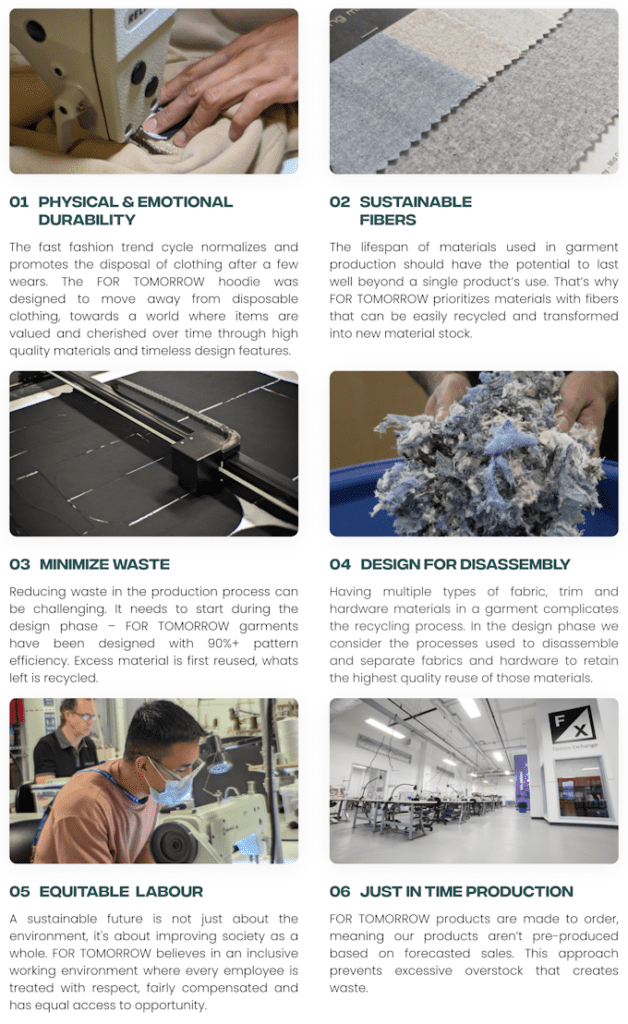
VT: What’s the background story of the design contest in which the hoodie idea was created?
KP: The creation of the hoodie began with an innovation workshop, where teams of George Brown fashion and design students explored the reinvention of the apparel industry through sustainable practices. Each team developed a product concept in a span of four days and delivered a fully realized presentation/product to a panel of judges.
The winning group who pitched the hoodie concept was chosen to collaborate with apparel industry stakeholders to establish six guiding principles for circular apparel design and developed three FOR TOMORROW hoodie prototypes. The final design was created by me and designed for production by the “Fashion Exchange” of George Brown College.
From the review of the first prototypes to the launch of the finished design, it’s been a year-long process of collaborative work with Matt Hexemer, the director of the global solutions studio at the Brookfield Sustainability Institute, Gagan Singh, the founder of SIXR and Luigi Ferrara, the dean of the Centre for Arts, Design and Information Technology at George Brown College, Chair and CEO of the Brookfield Sustainability Institute. My role as the designer of the For Tomorrow brand was to take the ideas and requirements of the brand and continuously innovate the design through pattern and sample making.
VT: How does the purchase and return process for recycling work with your clothing line? Could you walk us through the sustainability model behind it?
KP: Encouraging consumers to recycle isn’t always an easy request if consumers aren’t educated on the proper ways to recycle fabrics and textiles. Additionally, many fashion brands strive for circularity, but face financial struggles. This can translate into additional costs for the customers.
One organization providing a solution for this problem is SIXR, a sustainable tech startup that has created a platform that not only simplifies garment recycling, but also offers incentives to consumers to make sustainable shopping rewarding. The name SIXR represents the six Rs of style and responsibility:
- Reduce: buy less, choose well, and make it last
- Reuse: give old favourites a new life, swap, or shop thrift
- Recycle: responsibly dispose of worn-out clothes
- Repurpose: get creative and turn old into new
- Rethink: support eco-conscious brands and practices
- Repair: fix, don’t toss, to extend clothing life
SIXR is on a mission to prevent waste in the fashion industry by transitioning from a linear economy with a “take, make, waste” model to a circular economy. They do this through:
- Incentivizing and streamlining the reuse and recycling of clothing.
- Connecting sustainable brands to engaged customers.
- Working with George Brown College and the Brookfield Sustainability Institute to launch the first product on the SIXR platform, the For Tomorrow hoodie.
Crafted with easily recyclable fibres, your hoodie transforms into new material stock, sorted and recycled by the brand.
(Kai Palo)
The platform was created to make it easy for consumers. When it's time to part ways with your For Tomorrow hoodie, consumers use the SIXR app to send it back. Crafted with easily recyclable fibres, your hoodie transforms into new material stock, sorted and recycled by the brand.
SIXR believes in empowering you through financial incentives – the driving force behind our system. Your actions matter, and we want to motivate and reward you for recycling. Returning your SIXR-purchased clothes not only completes a cycle but also unlocks enticing incentives just for you.
When you back the Kickstarter and buy a For Tomorrow hoodie, a portion of the cost goes to the Planet Fund for reforestation, while another portion turns into a shipping credit for garment recycling. Your eco-conscious buying supports the reforestation, sustainable energy, and ocean cleaning sectors. Your impact, your rewards, and a better planet – all in one.
Each piece of SIXR clothing comes with its own QR code. Scan the QR code on your item to unveil its entire journey, from skilled creation to its final destination after use. You can find care instructions for longevity, and when it's time, use the SIXR app to return it and follow your hoodie's real recycling journey.
VT: Transitioning from a degree in theatre studies to fashion techniques is a bit of a shift. What motivated you to pursue this path, and how has your background in theatre influenced your approach to fashion design?
KP: For a long time, I wanted to pursue acting, not only because I was passionate about the craft, but also because it was exciting to be able to express myself in many different ways through the roles I portrayed. However, on my journey through theatre, I discovered a much stronger sense of identity, self-expression, and confidence through my sense of fashion and how I chose to present myself. I pursued more classes in costume design but upon graduating, did not feel as though I had the foundational knowledge or technical skills to be able to shape my interest in fashion into a professional career.
During the height of the pandemic, being creative was the best coping outlet I had for channelling anxiety and healing. It motivated me to absorb as much knowledge as possible from YouTube and books about the basics of sewing, which led to the beginning of my side career as an entrepreneur. My passion for learning led to my decision to return to school for a two-year program in fashion techniques and design.
In my mind, I believe every person is the main character in their own life production and when the line between costume and fashion is blurred, innovation is realized.
(Kai Palo)
I feel fortunate to have a background in costuming, as it has infused a different perspective on what fashion is to me. Designing costumes has expanded my creativity and artistic expression to convey the essence of a character or narrative for entertainment. Costume design often prioritizes visual impact and storytelling over day-to-day functionality whereas fashion design, although creative, is often influenced by market trends and consumer needs and preferences. In my mind, I believe every person is the main character in their own life production and when the line between costume and fashion is blurred, innovation is realized. My ability to blend creativity with functionality has been ingrained in my holistic and narrative-driven approach to design, which I believe sets me apart.
VT: Would you say that these two artistic avenues intersect?
KP: Fashion and costume design are interconnected disciplines that often influence each other. While they serve different purposes, they share common elements, trends, and design principles. For example, period-specific fashion trends can inform costume design in historical or period films to achieve authenticity. In contrast, historical costumes, when reinterpreted creatively, may inspire fashion designers to incorporate vintage elements or reinterpretations of historical styles into contemporary clothing. Additionally, advances in fabric technology and garment construction techniques pioneered by fashion designers may be applied by costume designers to create visually stunning and functional costumes. Nevertheless, unique materials or construction methods developed for specific costumes may influence fashion designers seeking innovative approaches in their creations.
In both fashion and costume design, the exchange of ideas is dynamic and multidirectional. I see them as two equals that live harmoniously, as in some ways, costume is a reflection of fashion’s past and is also a foreshadowing of what fashion’s future could be. I draw a lot of inspiration from anime and cosplay characters, resulting in experimentation with different materials and media that are not typically seen in mainstream fashion.
The concept behind my first collection “Fueled by Fantasy”, featured in the George Brown Threads 2023 Fashion Show, focused on adapting the narrative of preowned garments by reworking them into the world of streetwear, fantasy, and motorsports. 70% of the textiles used came from preowned hockey jerseys, garments and accessories or were thrifted from Value Village. Through extending the lifecycle of products by using the imagination, we can help to build a more sustainable future.
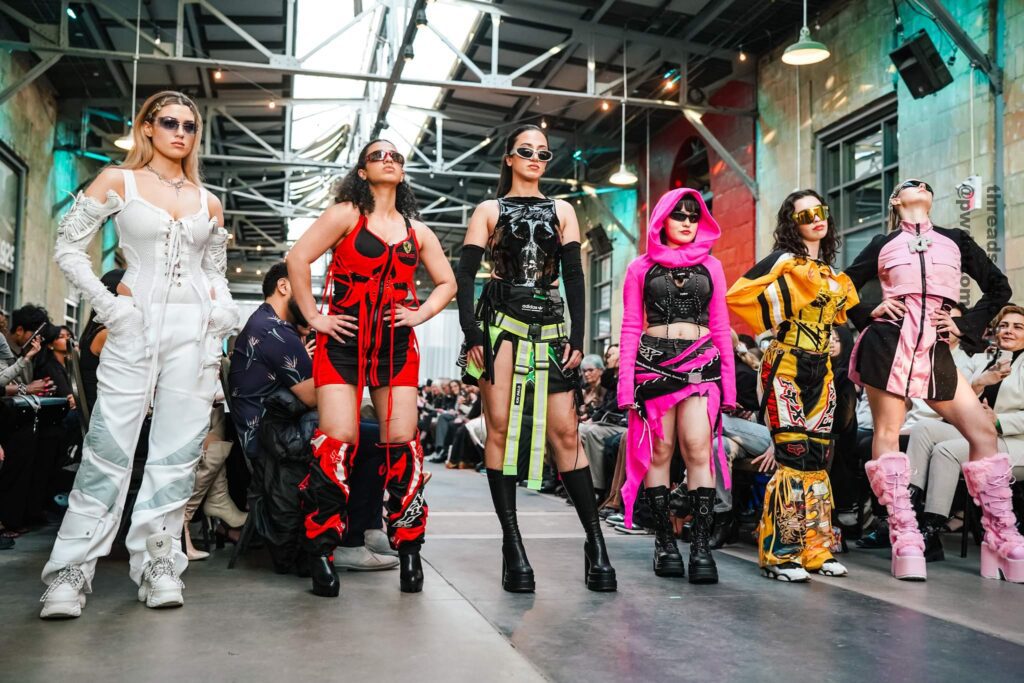
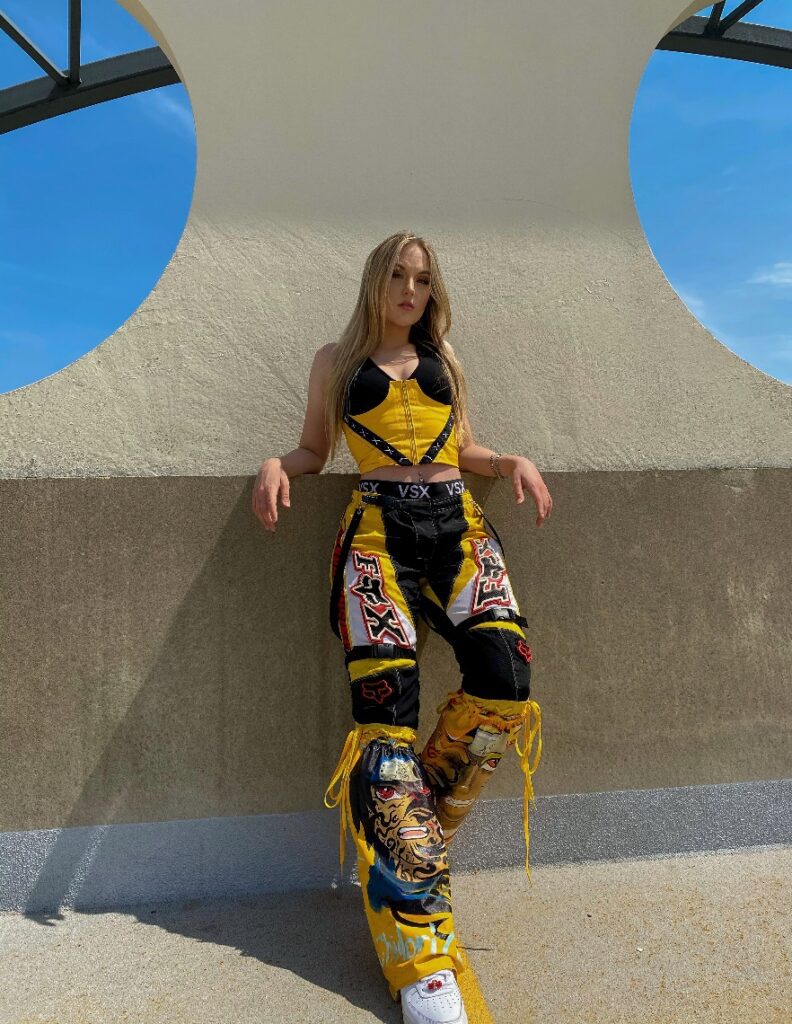
VT: Could you share some insights into your journey as an entrepreneur and your experience running your own business while also working with the Brookfield Sustainability Institute?
KP: My journey as an entrepreneur began during the pandemic when I decided to start selling clothes I never wore online. I opened a Depop and Poshmark shop (both are resale platforms), where I educated myself on running a resale business. My interest in sewing at the time fed the monster that was my alarming desire to take apart all of my clothes and create a lot of “hodgepodge.”
Unlike recycling, which involves breaking down materials to create new ones, reworking/upcycling involves repurposing existing items without degrading their quality.
(Kai Palo)
In hindsight, these creations reflected my feelings of turmoil, a feeling I’m sure everyone experienced during the pandemic. However, this process of reworking/upcycling was the root of what grew into my understanding and definition of sustainable fashion. Unlike recycling, which involves breaking down materials to create new ones, reworking/upcycling involves repurposing existing items without degrading their quality. The goal is to give a second life to items that might otherwise be considered waste. What seemed like an absurd obsession actually became the foundation for my passion about sustainability in the fashion industry.
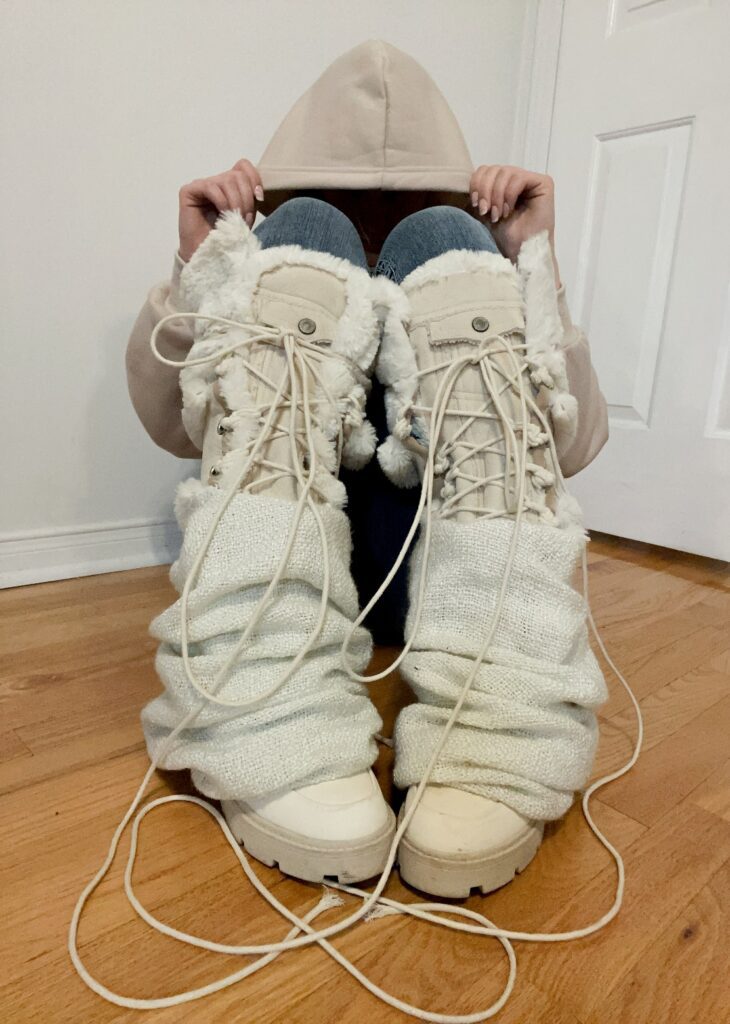
The Brookfield Sustainability Institute is a design research and innovation centre based in Toronto, Canada, focused on identifying, understanding, and developing smart sustainable solutions to help fight climate change. As a designer who had experience with upcycling fashion, the For Tomorrow brand not only aligned with everything I valued as a sustainable designer but also expanded my knowledge about more sustainable practices and solutions that catered to mass production. To this day, I still continue to sell reworked and upcycled thrifted garments as a side business while working professionally as a designer. Not only because I enjoy the creativity, but because it gives me purpose.
VT: You've been a member and volunteer with EKKT (Eesti Kunstnike Koondis Torontos / the Society of Estonian Artists in Toronto) for five years. How has your involvement with this organization impacted your work?
KP: I’ve been able to gain a lot of social interaction and connections with other Estonian artists, from whom I have learned a lot from as a younger designer.
I’ve been reminded of the importance of identity as it relates to my background and cultural upbringing and have learned to appreciate all different techniques specific to Estonians that are embraced when creating many forms of art.
I’m always inspired by how being an Estonian artist translates differently from person to person in an artist’s work. Admiring more traditional work versus work that explores modern day ideas has shown me the different ways culture can be expressed. For example, I went through a time where I focused on custom painting modern day shoes. I grew up hearing Estonian stories and wanted to translate this part of my cultural upbringing into a modern context. I painted my interpretation of the story of Kalevipoeg on a pair of Vans.
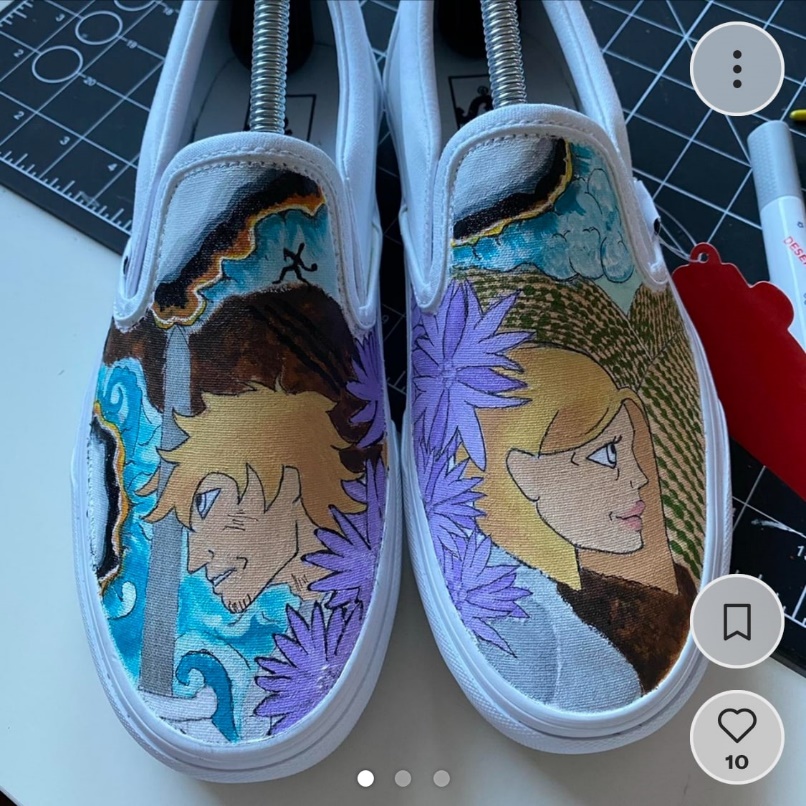
VT: The coat you and your mom made in 2020, featuring plastic sewn-in bread tags and material from a painting your mom created 20 years ago, sounds fascinating. Can you tell us more about the creative process behind this piece and the idea of repurposing materials for sustainable fashion?
KP: The painting, which was fully conceptualized and created by my mother, was used as a large floor lamp cover that we had in our home for many years. She wanted to do a collaboration in which I used my background in upcycling/reworking to give the lamp cover a new narrative that we could build off of.
My mother has always been interested in using found objects in her own art and in art therapy directives. She said that it was a shame to throw out all the colourful bread tags used in a daily staple for society. Her idea was to collect tags from friends and family and eventually create something with the collection. Once we decided on a coat design, her idea developed to have a long detachable collar for the coat and sew as many of the tags on as possible. At first, people don’t realize they are bread tags and assume it’s lace.
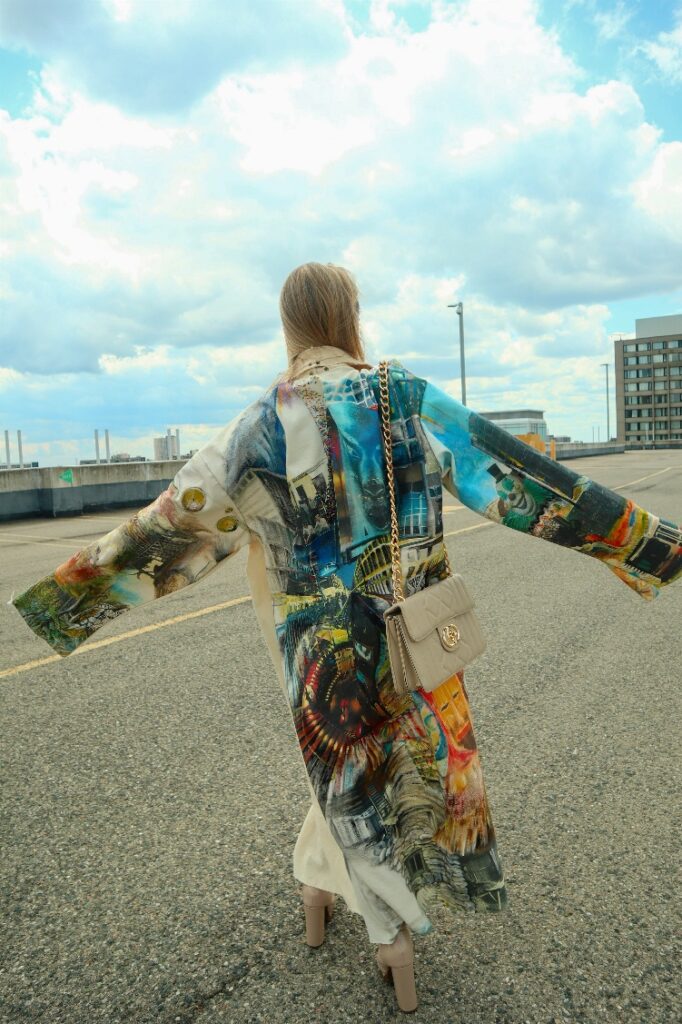
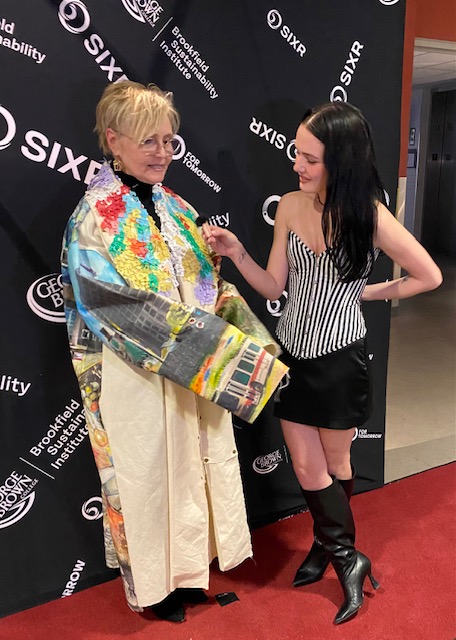
VT: What challenges have you faced in promoting sustainability in the fashion industry, and how do you navigate them in your designs and business practices?
KP: Sustainability’s biggest competition in the fashion industry is fast fashion. Fast fashion refers to a business model in the fashion industry that prioritizes the quick production of inexpensive clothing to respond to rapidly changing trends. The goal is to get new styles from the runway to stores as quickly and inexpensively as possible, allowing retailers to provide the latest fashion trends at affordable prices to a broader consumer base.
Fast fashion relies on a high turnover of inventory, encouraging consumers to buy frequently as styles change rapidly. This approach contributes to a “throwaway” culture where clothing is disposed of quickly.
(Kai Palo)
The result of this model is the high turnover of inventory. Fast fashion relies on a high turnover of inventory, encouraging consumers to buy frequently as styles change rapidly. This approach contributes to a “throwaway” culture where clothing is disposed of quickly.
Although consumers may not be aware of the environmental consequences that their shopping decisions cause, a lot of people are becoming more aware and are choosing not to acknowledge these facts. These people may justify that their contribution to pollution is microscopic. But millions of consumers are all thinking the exact same thing. So how do you change the mindset of millions of people who choose not to acknowledge their accountability?
In my experience, telling people something they do not want to hear does not mean that they will hear it or accept it. As a visual learner myself, showing people what sustainability can look like can help individuals comprehend the concept itself. For example, I document the process of making reworked/upcycled garments on my Instagram in the form of short videos. Based on my feedback, I think encouraging other people to get creative and think outside of the box is a way to get them excited about practising sustainability. Or even if they don’t want to create, they can continue to follow my journey and learn through my experiences.
Additionally, The For Tomorrow brand is offering something that has not been offered before: incentives. Showing people what sustainability can look like and the rewards that people can earn from making simple and positive choices is a step forward from knowing that you did a good deed because it’s the right thing to do.
VT: Looking ahead, what are your future goals and aspirations in the realm of sustainable fashion design?
KP: In the future, I aim to apply the insights gained from my experience with For Tomorrow brand to create my own label, integrating sustainable principles. There is a lot of grey area when it comes to understanding the relationship between sustainability and costume design, and given my strong inclination toward film and theatre, I envision myself exploring numerous eco-friendly avenues for crafting elaborate and extravagant garments for fashion, film, and theatre.
I’m eager to be among the new generation of leaders who will help shape the fashion industry.
(Kai Palo)
I think continuing to share my experiences with others and educating viewers on the importance of sustainability are some of the ways I can do my part to contribute to the bigger picture. I’m eager to be among the new generation of leaders who will help shape the fashion industry.
*Click here to join the For Tomorrow fashion movement*
(This interview has been edited and condensed.)

